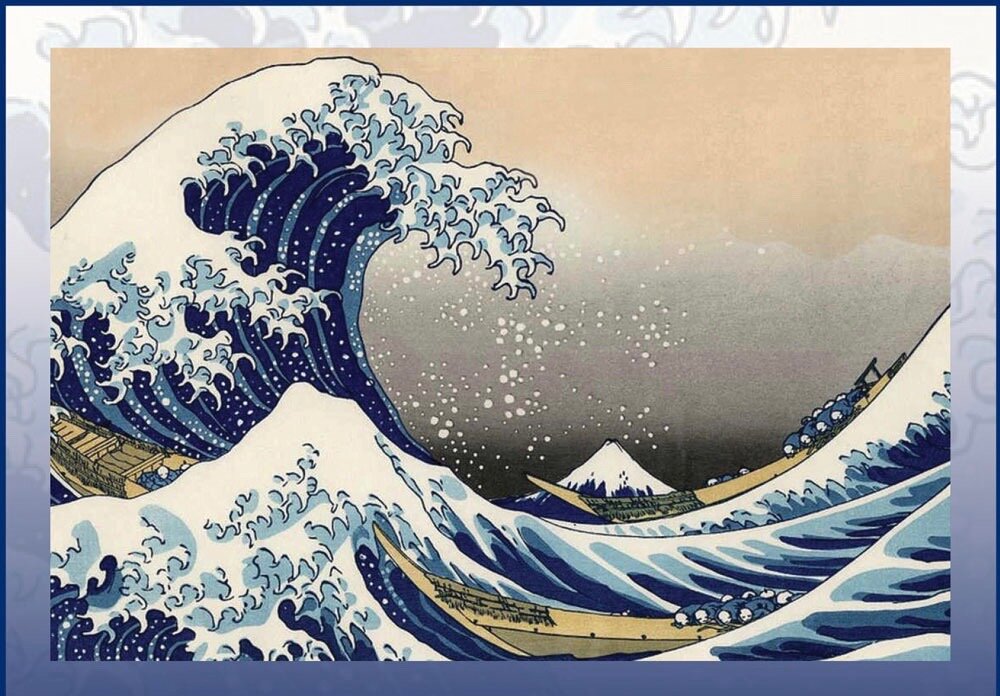One of the major goals of all the Buddha’s teachings is seeing with clear knowledge and vision the way things are. This is the path to the end of suffering. The implication here is that it is our own inattention, obscurations, prejudices and faulty reasoning, emotional entanglements, fears and desires, mistaken beliefs that interfere with our seeing clearly. This lack of seeing clearly prolongs our suffering. When we see clearly and deeply, we let go of old habits of mind and heart that don’t work for us. We gain freedom.
The fourth foundation of mindfulness is the road map toward that seeing clearly and that freedom. In this teaching, the Buddha talks about 5 categories of practice - the 5 hindrances, the 5 aggregates of clinging, the 6 sense doors (5 senses plus consciousness), the 7 factors of awakening, and the 4 Noble Truths. We have spent some time on the hindrances. We have even touched on the 7 factors of awakening, and we have explored the Four Noble Truths.
But the 5 aggregates of clinging sound a bit more alien and off-putting. So I have spent a few months looking at the 5 aggregates to become more familiar with their place in the teachings.
The 5 aggregates of clinging are the Buddha’s model for the categories of experience we all have. He used the word “aggregates” to indicate masses of stuff bundled together. Our experience feels like one more or less seamless field of experiential phenomena and this seamless field supports our belief that we are a solid self experiencing all of this. The Buddha’s model was a way for meditators to consider each aspect of our experience by contemplating each aggregate to begin to perceive their separateness.
Bhikku Bodhi explains in an article on the Upanisa Sutta, “The five aggregates - material form, feeling, perception, mental formations, and consciousness - are the basic categories structuring the Buddha’s analysis of experience. Each experiential occasion, from the Buddha’s perspective, is a complex process involving a number of factors functioning in unison. To normal, non-analytical consciousness, this unified complex appears as a uniform mass, a false appearance which, when accepted at face value, leads to the assumption of a simple solid self as the permanent subject of cognition…
“To dispel the illusion of independent selfhood, the experiential process must be submitted to searching scrutiny which rectifies the false perceptions contributing to its formation. The first phase in this examination is the dissection of the cognitive fabric into the distant threads entering into its make-up. These ’threads’ or components are the five aggregates. The aggregate of material form covers the physical side of experience, comprising both external material objects and the body together with its sense faculties. The other four aggregates constitute the mental side of experience. Feeling is the affective quality of pleasure or pain, or the neutral tone of neither pleasure nor pain, present on any occasion of mental activity. Perception is the selective faculty, which singles out the object's distinctive marks as a basis for recognition. The formations [sometimes known as volitional formations] aggregate is a comprehensive category incorporating all mental factors other than feeling and perception; its most conspicuous member is volition. And consciousness is the faculty of cognition itself, which sustains and coordinates all the other factors in the task of apprehending the object. These five aggregates function in complete autonomy, entirely through their reciprocal support without the need for a self-subsistent unifying principle to be identified as self or subject.”*
Through meditative contemplation, we can begin to see our physical experiences as belonging to the material aggregate, experiences with an affective tone as the aggregate of feeling, our noticing of an object’s distinctive signs (chirping as a bird call, facial recognition) as the workings of perception, our experience of will or volition as belonging to the mental formation aggregate, and of course our ability to cognize as our consciousness aggregate. This investigation helps us begin to see how experience unfolds with each aspect of experience arising and passing away - without a little man behind a green curtain making it happen. If our faculties are working properly, we can’t not see when we look around. We can’t not hear when there is a noise nearby. We may not notice, but the perception of sight and sound are present with or without our willing them to happen.
And the 5 aggregates are often referred to as the five aggregates of clinging because we can see with some analysis which aspect of experience is craving and clinging. The body hurts and wants to shift position. We like the bird sound and listen for more of it. We don’t like remembering the fight we had with a colleague and move to distract ourselves.
This may sound familiar to those who took Mindfulness-Based Stress Reduction (MBSR) in the past. As we negotiate an environment that may seem to present greater opportunities for suffering in store, it is helpful to have a practice like this to help ground us in the causes of our suffering. Attachment and clinging - often to the way things were, even when we weren’t all that happy about the way things were. Fear and aversion to what the future might bring which is based on our imaginings about the future. We can begin to see through the illusory nature of both past and future and stay with our present moment experience as a refuge that will help us connect to our inner calm, strength, and resolve.
* Bhikku Bhodi, Transendental Dependent Arising: Translation & Exposition of the Upanisa Sutta, Buddhist Publication Society, 1980.

